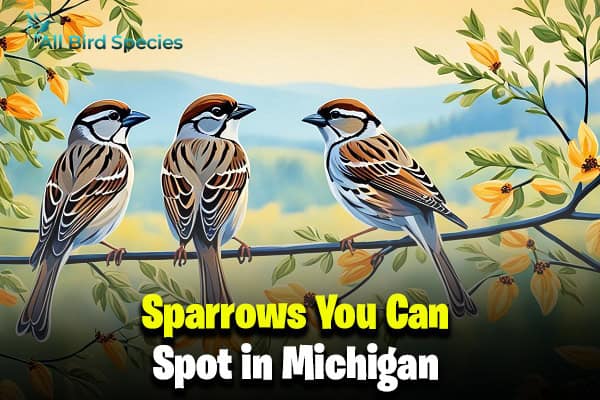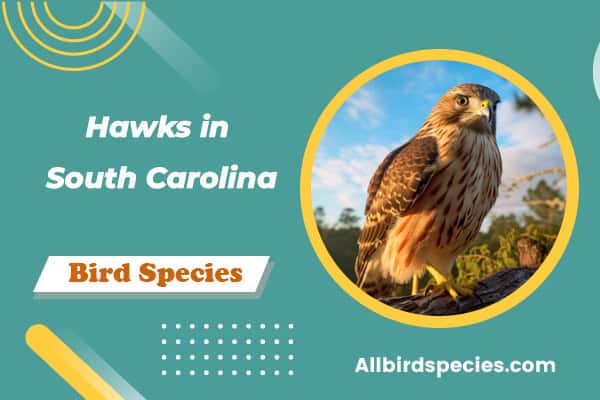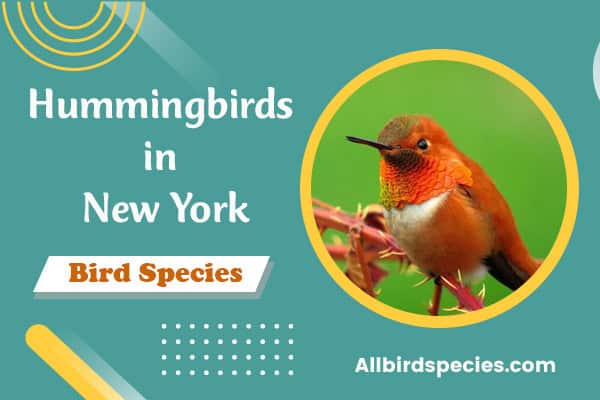5 Types Of Sparrows You Can Spot in Michigan (ID Guide)
Did you know Michigan is home to over 30 types of sparrows? Among them, 19 species call Michigan home. These birds are key to the state’s bird life. They are small but play big roles in their environments.
This guide will teach you how to spot sparrows in Michigan. You’ll find them in cities and wetlands. By learning about these birds, you’ll see their beauty and importance.
Introduction to Sparrows in Michigan
Michigan is a great place for sparrows, with many different kinds. These small birds live in many places, from cities to farms. Birdwatchers in Michigan can see these birds as they adjust to their homes.
The House Sparrow is one of the most common birds here. It was brought to Michigan and changed the local nature. These birds make Michigan’s skies more interesting. They also help keep nature in balance. Watching Michigan sparrows teaches us about their lives and how they help the environment.
The Role of Sparrows in Michigan’s Ecosystem
Sparrows are key to Michigan’s ecosystem. They help keep nature in balance. By spreading seeds, they help plants grow and keep habitats healthy. Their eating habits also help plants and farms.
Sparrows control pests too. They eat insects and pests that could harm plants. This shows how important sparrows are for the environment. Changes in their numbers can tell us about the health of nature.
Sparrows connect with other animals in important ways. They make the ecosystem and environment better in Michigan.
| Role of Sparrows | Impact on Ecosystem |
|---|---|
| Seed Dispersal | Promotes plant growth and diversity. |
| Pest Control | Regulates pest populations, benefiting agriculture. |
| Environmental Indicators | Signifies habitat quality and biodiversity levels. |
Identifying Sparrows: Key Characteristics
When you’re out in the field, sparrow identification can be fun. Not every sparrow looks the same. Knowing the characteristics of sparrows makes it easier to spot them. Each type has its own special features.
Sparrows are usually 4.5 to 8 inches long. Some may look alike, but small differences help tell them apart. For example, the House Sparrow has a big body and a short tail. The Song Sparrow has a longer body and a unique streaked breast. Color is also key in telling species apart.
Vocalizations are important for spotting sparrows too. Many sparrows have their own calls. The Song Sparrow, for instance, sings beautiful songs. This can help you identify it, even when it’s hidden.
Here’s a table with some key traits of sparrows you might see in Michigan:
| Species | Size (inches) | Color Patterns | Typical Call |
|---|---|---|---|
| House Sparrow | 6.3 | Brown and gray with black markings | Cheep cheep |
| Song Sparrow | 5.9 | Brown streaks with a white belly | Melodious trill |
| Swamp Sparrow | 5.5 | Brown with gray and rusty hues | Low, buzzy notes |
| Dark-eyed Junco | 6.5 | Gray with white outer tail feathers | Soft trill |
Knowing these characteristics of sparrows makes birdwatching better. It also helps you appreciate these birds more. Every trip becomes a chance to connect with nature and learn about Michigan’s sparrows.
1. House Sparrow
- Scientific name: Passer domesticus
- Life span: 3-5 years
- Size: 14-16 cm
- Weight: 30-40 g
- Wingspan: 20-23 cm
The House Sparrow, known as Passer domesticus, is a common bird in Michigan cities. It brightens up busy streets and squares with its presence. This section will talk about its looks, behavior, where it lives, and what it eats.

Appearance and Behavior
The House Sparrow has a sturdy body, a short tail, and a bill perfect for eating seeds and grains. Males have bright colors like gray on top and white cheeks, with a black bib. Females are more muted with brown and tan colors.
They love to be around other sparrows and can be found in big groups, especially in cities. They’re great at living close to people, making them common in parks and gardens.
Habitat and Diet
House Sparrows are like places where people are around. You’ll see them near buildings, cafes, and homes. They eat grains, seeds, and sometimes human food, showing how they can live in different places.
This shows how they can make the most of their surroundings in Michigan.
2. Song Sparrow
- Scientific name: Melospiza melodia
- Life span: 2-7 years
- Size: 14-18 cm
- Weight: 22-40 g
- Wingspan: 23-25 cm
The Song Sparrow, known as Melospiza melodia, brightens Michigan’s landscapes. It’s famous for its sparrow songs that are both rich and varied. Learning to spot Song Sparrows means paying attention to their looks and sounds.

Identifying Features
Song Sparrows are medium-sized, about 6.5 to 7.5 inches long. They have streaked brown feathers that help them hide. Look for these key features:
- Broad, rounded tail
- Dark central breast spot on a lighter background
- Long, conical bill for seed-eating
These traits make Song Sparrows stand out in different places.
Song Variations and Nesting Habits
Song Sparrows make many different sounds, like clear trills and buzzing notes. Their sparrow songs change with the place they live. They build their nests on the ground, often hidden in tall grass or thick bushes.
This keeps their eggs and young safe. They eat seeds and insects, finding them in their natural spots.
3. Swamp Sparrow
- Scientific name: Melospiza georgiana
- Life span: 2-4 years
- Size: 14-16 cm
- Weight: 20-35 g
- Wingspan: 22-23 cm
The Swamp Sparrow, known as Melospiza georgiana, lives in many marshes across North America. It has unique traits that make it stand out. These traits help birdwatchers spot it easily in the marsh.

Identifying Characteristics
Look for the Swamp Sparrow’s reddish wings and gray face. These features make it easy to tell apart from other marsh birds. Its sturdy body and short tail also help in quick identification in the marsh.
Diet and Foraging Behavior
Swamp Sparrows eat insects and seeds, showing how adaptable they are. They search for food in thick plants, staying hidden. This skill helps them survive in the marsh, where they find plenty of food.
| Characteristic | Description |
|---|---|
| Scientific Name | Melospiza georgiana |
| Coloration | Reddish wings, gray facial features |
| Habitat | Marsh habitats with dense vegetation |
| Diet | Insects, seeds |
| Foraging Behavior | Cleverly navigates through dense foliage |
4. Dark-eyed Junco
- Scientific name: Junco hyemalis
- Life span: 3-7 years
- Size: 14-16 cm
- Weight: 20-30 g
- Wingspan: 19-25 cm
The Dark-eyed Junco is a favorite among winter birds in Michigan. It’s known for its unique look, ranging from gray to white. This makes it stand out against the snow.
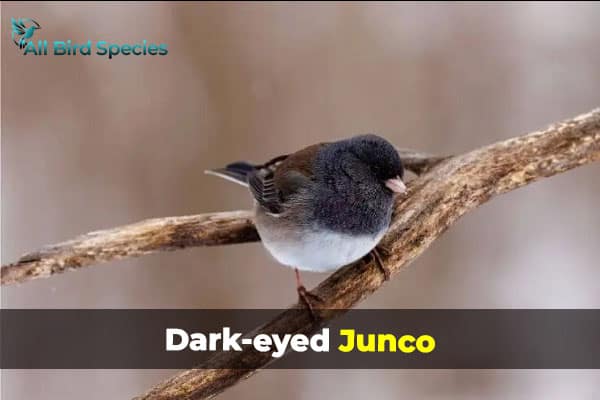
These birds love to be in groups. They search for seeds and insects on the ground. You can spot them in open places like gardens and parks. They make winter more lively with their fun behavior.
In spring, they build nests, but you can see them in winter too. They’re common in Michigan’s different places. Watching these birds is a joy for bird lovers and others.
5. White-throated Sparrow
- Scientific name: Zonotrichia albicollis
- Life span: 5-10 years
- Size: 16-19 cm
- Weight: 25-38 g
- Wingspan: 22-25 cm
The White-throated Sparrow, known as Zonotrichia albicollis, is a favorite among bird lovers. It stands out with its bright colors and sweet song. This bird is known for its elegant look, with white and brown feathers and unique face markings.
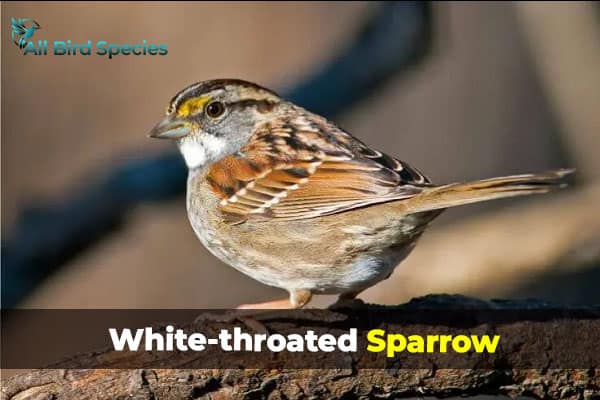
Its song is a high-pitched whistle that makes it easy to spot. This makes the White-throated Sparrow a key bird for birdwatchers.
Song and Nesting Habits
The White-throated Sparrow’s song is a joy to hear in North America’s outdoors. Its songs help it communicate during the breeding season. They build nests near the ground, using leaves, grasses, and twigs.
These birds eat seeds, fruits, and insects. Watching a White-throated Sparrow can make birdwatching more fun.
Habitat Preferences of Sparrows in Michigan
Michigan is home to many sparrow species, each with its own habitat preferences. These birds live in everything from busy cities to quiet wetlands and thick forests. Knowing where they live helps us understand their importance and the problems they face.
Urban areas draw House Sparrows, who have learned to live in cities. They use buildings for homes and food. Song Sparrows like wetlands and areas near water for food and places to nest.
Forests are key for many sparrows. Swamp Sparrows like wet, shrubby areas for safety. Other sparrows prefer open forests, showing how different birds like different places.
Loss of habitat from cities, farms, and climate change threatens sparrows. Efforts to save Michigan avian habitats help these birds. Keeping natural places safe is key for their survival and making more birds.
Conservation Challenges for Sparrows in Michigan
The sparrow population in Michigan faces many challenges. Cities growing to take away their homes. This makes it hard for sparrows to find places to live, eat, and nest.
Farming also hurts sparrow numbers. Farms destroy the grasslands and edges where sparrows live. This takes away their food and homes, making it tough for them to survive.
We need to work together to save sparrow homes. Restoring grasslands and wetlands helps sparrows. Working with farmers and city planners is key to keeping sparrows safe.
Teaching people about sparrows is important. By learning about these birds, we can help protect them. Sharing what we know can make a big difference.
You can help too. Supporting groups that protect sparrows, helping with restoration, and watching birds are good ways to help. Every bit helps keep sparrows in Michigan.
Wrapping Up…
Sparrows in Michigan are truly vital to our ecosystems. They help spread seeds and control pests, keeping nature in balance. Their presence shows how healthy our local environments are.
Each type of sparrow has its special traits and ways of behaving. From the House Sparrow to the Song Sparrow, they all add to the beauty of nature. Watching birds can make us feel closer to the world around us. It teaches us to appreciate and enjoy nature more.
We need your help to make sure sparrows will still be around for others to see. Supporting conservation efforts and telling others about these birds is key. Together, we can keep Michigan’s sparrows and their habitats safe for the future.

